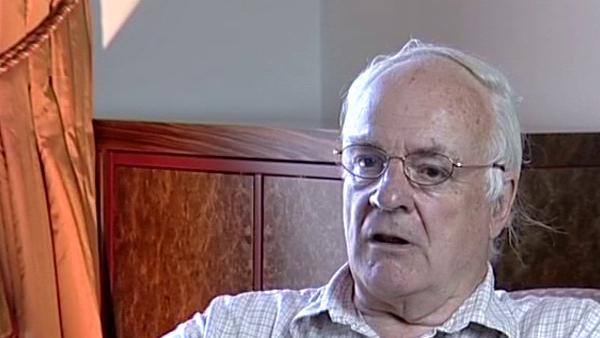The question which we wanted to answer was whether neonatal tolerance was there once and for all, or whether it depended on some persistent antigenic stimulus. It was difficult to do that with tissue cells because, well for obvious reasons, they do colonise the body. Lymphocytes colonise the body, so you couldn't do it with them. The avian red cell is nucleated so it's got the antigens, or most of the antigens, which you're interested in, but it has a limited life span. So, I discovered that you could label chicken red cells with chromium, radio chromium- no surprise about that- but that told you that you could follow the decay of the red cells, and you could show that if you transplanted- sorry, if you injected labelled cells from one chicken into an unrelated chicken, they got rejected in a very nice immunological way, rather like the old skin grafts and the tumour grafts. The red cells circulated perfectly for four days or so and then they got cleared and chromium disappeared from the blood, so that was a good way of monitoring whether the host was tolerant or not. And I discovered two things. One was that so long as you kept reintroducing red cells into a bird with which you started when the bird was an embryo, so you'd have to inject the egg, they would never recover. But as soon as you stopped giving red cells, then they began to recover from tolerance. They started making this elimination response. Perhaps the most interesting part of that was that the speed of recovery depended on how old the chicken was when you stopped the infusion of antigen, and when the chicken was- when you stopped after, say, three weeks, the chicken would recover reactivity, after about three weeks. If you stopped it after three months, it would take something more like three months to recover. And I certainly didn't understand exactly what was going on, but I guessed, and I think that guess has been substantiated, probably not in this particular system, but in other systems. But that's because the recovery is the result of new cells being fed out of the thymus and the thymus atrophies as the bird gets older, just as it does in men or mice.
Avrion Mitchison, the British zoologist, is currently Professor Emeritus at University College London and is best known for his work demonstrating the role of lymphocytes in tumour rejection and for the separate and cooperative roles of T- and B-lymphocytes in this and other processes.
Title: Working on chickens
Listeners:
Martin Raff
Martin Raff is a Canadian-born neurologist and research biologist who has made important contributions to immunology and cell development. He has a special interest in apoptosis, the phenomenon of cell death.
Listen to
Martin Raff at Web of Stories
Duration:
2 minutes, 51 seconds
Date story recorded:
June 2004
Date story went live:
24 January 2008






